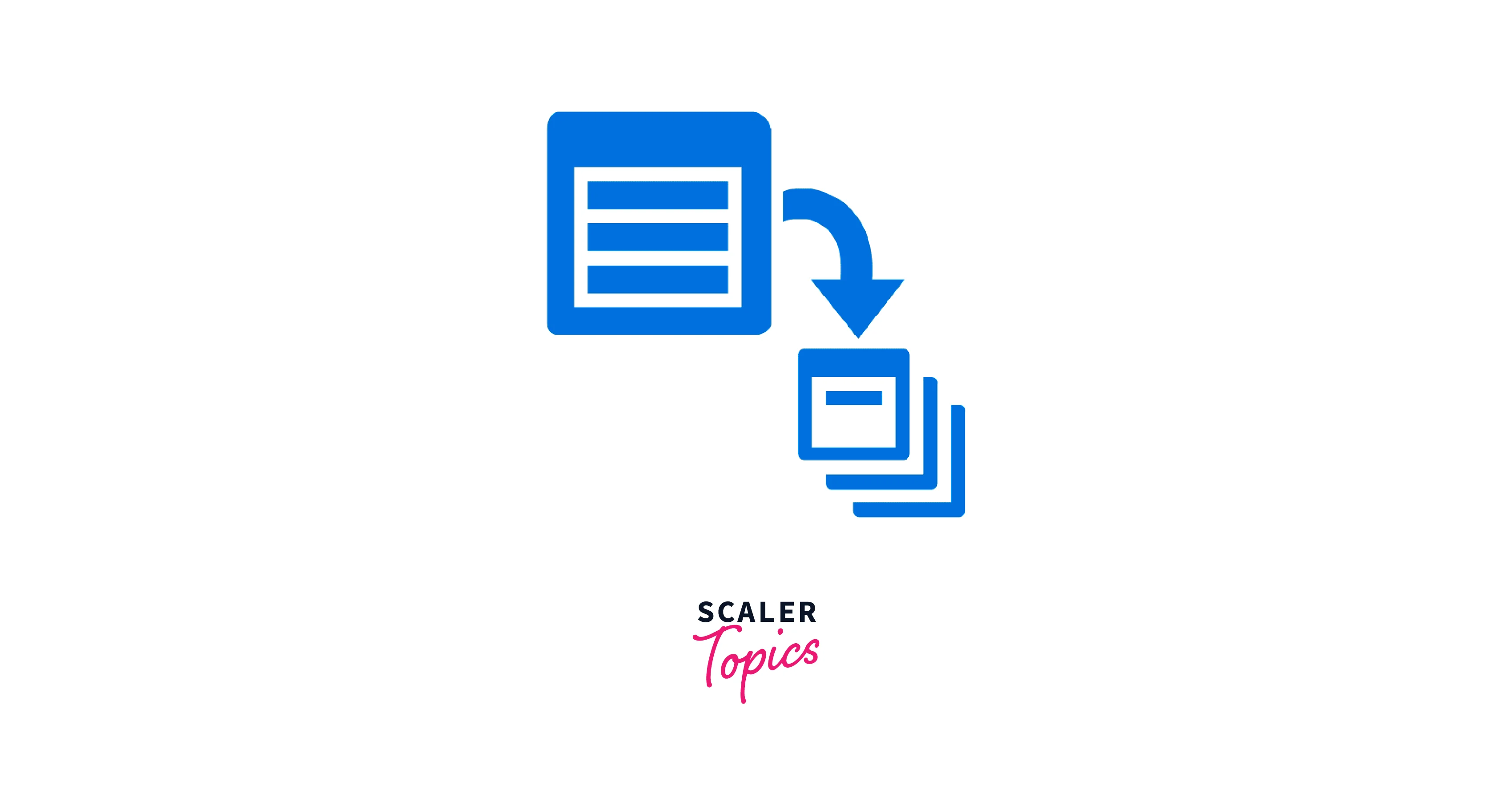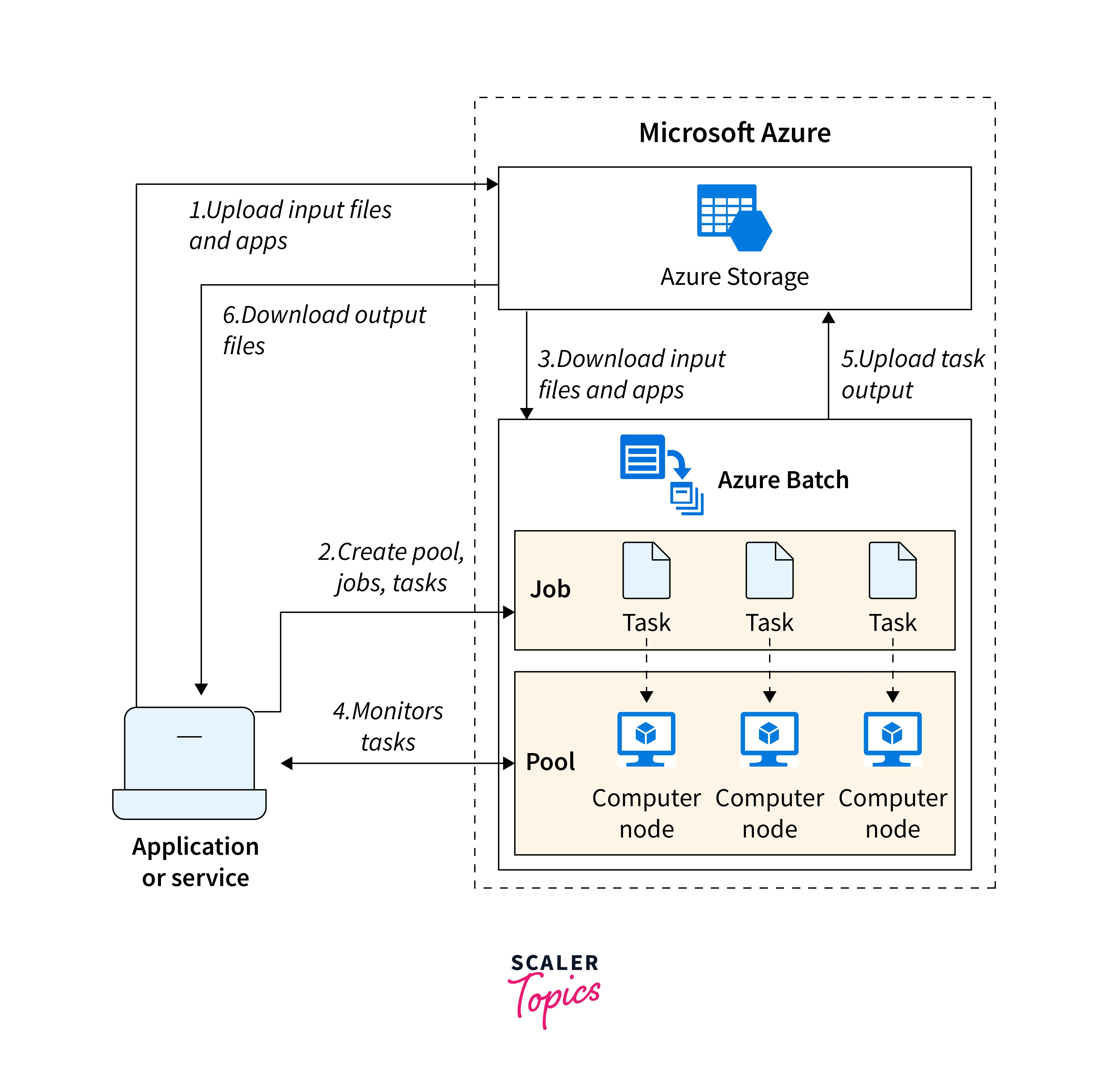Microsoft Azure Batch
Overview
Microsoft Azure Batch is a cloud-based service for parallel and high-performance computing. It automates task distribution and management across virtual machines, making it ideal for compute-intensive workloads like rendering, simulations, and data processing. Azure Batch offers scalability and cost-effectiveness, simplifying complex computing tasks.
When Should We Use Azure Batch?
Azure Batch should be used when you have the following requirements:
-
High-Performance Computing (HPC) Workloads:
When you need to perform compute-intensive tasks such as scientific simulations, rendering, or complex data analytics that require significant processing power. -
Parallel Processing:
For workloads that can be divided into smaller, parallelizable tasks that can run concurrently on multiple virtual machines to reduce processing time. -
Scalability:
When you require the ability to scale out your computing resources dynamically based on workload demands, allowing you to handle large batches of tasks efficiently. -
Job Scheduling:
When you need a centralized job scheduling system that automates task distribution, resource allocation, and job management, saving time and effort. -
Cost Optimization:
For cost-effective computing, as Azure Batch allows you to pay only for the resources you use during job execution, scaling down or pausing when tasks are completed. -
Task Dependency Management:
When your tasks have dependencies on one another and need to be executed in a specific order or in response to the completion of other tasks. -
Multi-Platform and OS Support:
When you need to run workloads on various virtual machine configurations and operating systems in a heterogeneous environment. -
Integration with Azure Services:
When you want to integrate Azure Batch with other Azure services like Azure Storage, Azure Virtual Machines, or Azure Functions to create end-to-end workflows.

How Does Azure Batch Work?
The workflow for using Azure Batch, as described, involves several steps to efficiently process parallel workloads:
- Upload Input Files and Applications:
You begin by uploading the input files (data to be processed) and the corresponding applications (scripts or software) to your Azure Storage account. These input files and applications will be used in the subsequent tasks. - Create a Batch Pool and Job:
In your Azure Batch account, you create a pool of compute nodes. This pool represents the resources available for running your tasks. You configure properties for the pool, such as the number and size of nodes, VM image, and any custom application installations. Concurrently, you create a job within the pool to manage the workload. - Task Scheduling:
Tasks are added to the job, and the Azure Batch service automatically schedules these tasks to run on the compute nodes within the pool. Each task uses the application you uploaded to process the input files. - Download Input Files and Applications:
Before a task begins execution, it can download necessary input data and applications from Azure Storage. This ensures that each task has access to the required resources. - Monitor Task Execution:
Throughout the execution of tasks, you can monitor the progress of the job and individual tasks by querying the Azure Batch service. This communication happens over HTTPS, allowing you to efficiently track the status of potentially thousands of tasks running on multiple compute nodes. - Upload Task Output:
As tasks complete their processing, they can upload their output data back to Azure Storage. This step allows you to store and access the results of the processing. - Download Output Files:
Once all tasks within the job have completed, your client application or service can download the output data for further analysis or processing.

It's important to note that this workflow represents a common scenario for Azure Batch, which is particularly suitable for parallelizable workloads like rendering, simulations, and batch processing. Azure Batch provides the infrastructure management and task scheduling capabilities, allowing you to focus on your specific application logic and data processing tasks. Additionally, Azure Batch offers various features and customization options to meet specific workload requirements.
How to Work with Azure Batch?
Working with Azure Batch involves several key steps and tasks. Here's a high-level overview of how to work with Azure Batch:
- Set Up Azure Batch Account:
If you don't already have an Azure Batch account, create one in the Azure portal. - Create a Pool of Compute Nodes:
Within your Batch account, create a pool of virtual machines (VMs) that will be used to execute your tasks. Configure the VM sizes, images, and any customizations needed for your workload. - Create a Job:
Define a job within your pool to manage the workload. Specify the job's ID, constraints, and settings. This job represents the set of tasks that need to be executed. - Define and Add Tasks:
For your job, define the individual tasks that make up the workload. Tasks include details like the command to execute, input data, and task dependencies. - Submit the Job:
Submit the job to the Batch service for execution. Azure Batch will automatically schedule the tasks across the available compute nodes in your pool. - Monitor Task Execution:
Continuously monitor the progress of your job and individual tasks. Azure Batch provides monitoring and logging capabilities to track task completion and troubleshoot any issues. - Retrieve Task Output:
Once tasks are completed, retrieve the output data or results from Azure Storage or directly from the compute nodes, depending on your configuration.
What Are Important Features of Azure Batch?
Azure Batch offers several important features that make it a powerful tool for managing and executing parallel and high-performance computing workloads. Some of its key features include:
- Elastic Pool of Virtual Machines:
Azure Batch allows you to create and manage pools of virtual machines (VMs) with varying sizes and configurations. You can scale the pool up or down dynamically to match workload demands, optimizing resource usage and cost. - Task Parallelism:
It enables you to execute multiple tasks in parallel across multiple compute nodes, maximizing efficiency and reducing processing time for compute-intensive workloads. - Custom VM Images:
You can use your custom VM images, which may include pre-installed software and configurations, to ensure that compute nodes are set up exactly as required for your tasks. - Job Dependencies:
Azure Batch supports task dependencies, allowing you to define the order in which tasks should be executed or specify that certain tasks should only run if others complete successfully. - Auto Scaling:
You can configure auto-scaling policies to automatically adjust the number of compute nodes in your pool based on factors like CPU utilization or specific metrics, ensuring that you have the right amount of resources when you need them. - Azure Spot VMs:
Azure Batch supports Azure Spot VMs, which can significantly reduce compute costs. Spot VMs take advantage of spare Azure capacity, providing lower-cost options for non-time-sensitive workloads. - Task Retry and Error Handling:
It offers built-in mechanisms for handling task failures and retries, helping to ensure the successful completion of jobs even in the face of transient errors.
Real-World UseCase
Here are some real-world examples and scenarios where Azure Batch has been used successfully:
- Genomics Research:
Genomics research often involves processing vast amounts of genetic data. Azure Batch has been used to run complex genomics pipelines, such as DNA sequencing, variant calling, and data analysis. Researchers can scale their computing resources as needed to handle large data sets and reduce processing times. - Rendering and Media Processing:
Animation studios, video production companies, and streaming services use Azure Batch for rendering and media processing tasks. It allows them to quickly render high-definition videos, process image data, and transcode media files in parallel. - Engineering Simulations:
Companies in the automotive, aerospace, and manufacturing industries use Azure Batch to run complex engineering simulations, like finite element analysis (FEA) and computational fluid dynamics (CFD). This enables them to evaluate product designs and performance more efficiently. - Weather Forecasting:
Meteorological agencies leverage Azure Batch for weather forecasting models that require extensive data processing. It enables them to run numerical weather prediction models and process large datasets to improve the accuracy of weather forecasts.
Python SDK for Azure Batch
You can use Python to interact with Azure Batch. Here's an example code snippet to create a Batch client, pool, and job. Make sure to set up your Azure Batch account and authentication credentials first.
Azure Batch Explorer
Azure Batch Explorer is a graphical user interface tool for managing and monitoring Azure Batch. You can use it to create, manage, and monitor Batch accounts, pools, jobs, and tasks. It provides a more user-friendly way to interact with Azure Batch.
Download and Install Azure Batch Explorer
This tool allows you to explore and experiment with Azure Batch without writing code.
Feel free to explore the Azure Batch documentation for more information and examples:
By using the provided code and tools, readers can experiment with Azure Batch and gain hands-on experience with the service.
Conclusion
- Azure Batch is designed for parallel and high-performance computing, automating task distribution across virtual machines.
- It's ideal for compute-intensive workloads like rendering, simulations, and data processing.
- The workflow involves uploading input files, creating a compute node pool, defining jobs and tasks, scheduling tasks, monitoring, and managing task output.
- Azure Batch simplifies the execution of parallel tasks, offers scalability, cost-effectiveness, and is suitable for various compute-intensive scenarios.
